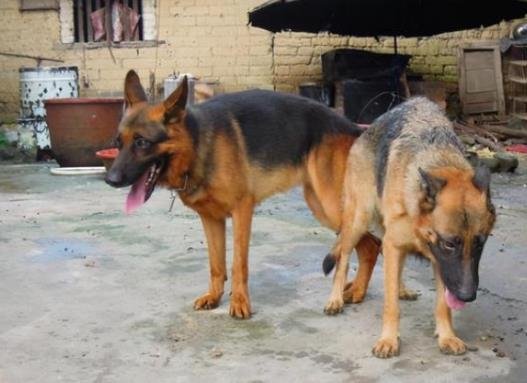
Why Do Dogs Get Stuck Mating? The Science Explained
The Basics of Canine Mating
If you’ve ever wondered why dogs get stuck together during mating, you’re not alone. This phenomenon, often referred to as the ‘tie,’ is a natural and normal part of canine reproduction. But what exactly causes this to happen?
The Role of the Bulbus Glandis
The key player in this scenario is the bulbus glandis, a part of the male dog’s anatomy. When a male dog ejaculates, this gland swells up and locks the male to the female. This ensures that the maximum amount of sperm is delivered to increase the chances of fertilization. It’s nature’s way of optimizing the reproductive process.
How Long Does the Tie Last?
The duration of the tie can vary, but it generally lasts anywhere from 10 to 30 minutes. During this time, both dogs are generally calm and may even appear to be uninterested in each other. It’s crucial not to try to separate them, as this could cause injury to both animals.
Is It Painful for the Dogs?
While it may look uncomfortable, the tie is usually not painful for the dogs. Both animals are instinctively aware of what’s happening and will remain still until the male’s bulbus glandis reduces in size, allowing them to separate naturally.
Should You Intervene?
As tempting as it might be to help the dogs, it’s best to let nature take its course. Interfering can cause stress and potential harm. If you’re concerned, consult your vet, but know that this is a normal part of canine mating behavior.
So, the next time you see dogs get stuck mating, remember that it’s all part of the natural process designed to ensure the continuation of their species. It’s just another fascinating aspect of the animal kingdom!
American Dingo animal behavior Budget Tips canine behavior Canine Care Canine Health DIY pet projects dog behavior Dog Breeds dog care Dog Care Tips dog exercise Dog Food Dog Grooming dog health Dog Measurement dog nutrition dog ownership dog potty area Dog Training Dog Wound Care Family Pets Hunting Dogs lipomas in dogs newborn puppy care obedience training outdoor pet care Pet Care Pet Care Tips Pet Health Pet Loss Pet Safety pet tips pet training Positive Reinforcement Potty Training Puppy Care puppy health Puppy Training Rabies in Dogs Temperature Monitoring Training Tips veterinary advice Veterinary Care Veterinary Tips
-
 Daylight Saving Time & Dogs: Vet-Reviewed Effects on Canine Sleep, Behavior & Adjustment Tips
5 views
Daylight Saving Time & Dogs: Vet-Reviewed Effects on Canine Sleep, Behavior & Adjustment Tips
5 views -
 Can Dogs Get the Flu Like Humans?
3 views
Can Dogs Get the Flu Like Humans?
3 views -
 How to Safely Use a Retractable Pet Dog Leash for Walks and Training
3 views
How to Safely Use a Retractable Pet Dog Leash for Walks and Training
3 views -
 How to Teach Your Puppy to Come: A Step-by-Step Guide
3 views
How to Teach Your Puppy to Come: A Step-by-Step Guide
3 views -
 Effective Techniques to Massage Gas Out of a Dog
2 views
Effective Techniques to Massage Gas Out of a Dog
2 views -
 Master the German Shepherd Interaction Tips
2 views
Master the German Shepherd Interaction Tips
2 views -
 Essential Care Guide: Pet dogs Wellness Checks Every Owner Needs
2 views
Essential Care Guide: Pet dogs Wellness Checks Every Owner Needs
2 views -
 How to Care for a Sick Puppy: Essential Tips and Advice
2 views
How to Care for a Sick Puppy: Essential Tips and Advice
2 views -
 How to Train Your Dog to Be Calm: 6 Best Tactics to Know
2 views
How to Train Your Dog to Be Calm: 6 Best Tactics to Know
2 views -
 Labrador vs. Golden Retriever: Key Differences for Families
2 views
Labrador vs. Golden Retriever: Key Differences for Families
2 views










Leave a Reply
You must be logged in to post a comment.